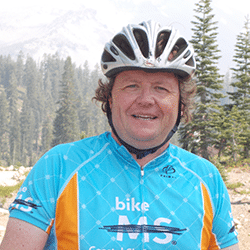At a meeting recently, I asked two PhD molecular biologists about the last time they used a Southern blot. After nearly a minute of unrestrained laughter, they asked “Who on earth still does that?”
“Maybe for a very, very specific use,” conjectured one of the scientists. When I asked the scientist who taught me the technique a very long time ago, she was a little more thoughtful: “I haven’t run a Southern gel in five years. Not too sure if anyone uses it in this day of array, RNA-seq, PCR-based detection of copy number alterations and genomic rearrangements.”
When I first walked into a real laboratory in 1984, just after completing my undergraduate degree, Southern blots were the first technique I was trained in. I ended up doing a lot of blots. At the time, it was “the” way to determine specific sequences of DNA. It was also very easy to perform, although a lot of time was spent exposing vague-looking bands for longer and longer periods of time (say, from weeks to a month or so).
Surprisingly, Southern blots are still used. In the 1980s, about 300 papers per year cited the use of Southern blots. This number peaked in 1992 and 1993 at around 3,000 citations a year. Now, as PCR, DNA microarrays, and NGS dominate the DNA analysis scene, about the same number of Southerns are cited as in the 1980s.
From chopping to blotting—the birth of a revolutionary technique
Announced in a 1975 Journal of Molecular Biology paper by Edwin Southern (now Sir Edwin, and also retired), an Oxford University-based molecular biologist, the Southern blot matched gel electrophoresis with hybridization to characterize fragments of DNA. Southern actually invented the blot at the MRC Mammalian Genome Unit in Edinburgh, Scotland, through a need to speed up DNA analysis. At the time, he was analyzing 5S rRNA as part of a transcription study. He tried isolating genes by chopping up the electrophoresis gel containing the DNA. But how to get the DNA out of the gel? “The prospect of cutting lots of gels into hundreds of slices, eluting the DNA from each of them and binding this to a filter that would then be hybridized and counted drove me to think that there had to be a better way of doing it,” he recalled later.
How do Southerns work?
Southern blots start out in an electrophoresis gel, in which DNA is separated by size (via an electric current run through the gel). Restriction enzymes determine where DNA fragments are cleaved. A blot is then placed on the gel, and a radiographic image is taken.
- DNA is digested using restriction enzymes.
- The DNA is loaded into a row of wells in the agarose gel (most gels are agarose, though polyacrylamide is use, too) and are separated by electrophoresis.
- DNA is denatured into single strands using NaOH.
- The DNA fragments are then transferred to a nitrocellulose membrane. DNA travels to the membrane by capillary action through a wick, or by a vacuum apparatus.
- The DNA is pre-hybridized to make sure non-specific binding sites are blocked. Salmon sperm DNA is apparently a good source of non-specific DNA.
- The ssDNA is hybridized with labeled ssDNA. Early uses employed 32P, but other bioluminescent and reactive probes are now used.
- Results are visualized using autoradiography for 32P, or colorimetry and luminescence for other methods.
Why do Southerns?
While PCR, microarrays, and sequencing have largely replaced Southern blots, there are still some occasions in the lab where a gel electrophoresis and Southerns are useful:
- Southern blotting is still a lot cheaper than NGS.
- It can find the position of a sequence in a large DNA fragment.
- Southerns can detect chromosomal rearrangements, determine the number of copies of a gene, and find sequences with low homology.
- Finally, Southern blots are useful when you’re exploring unsequenced DNA from an unknown organism.
So, Southern blots haven’t yet been relegated to the trash bin of laboratory history. Several biological tool manufacturers, such as GE Healthcare and Life Technologies (now ThermoFisher), continue to sell Southern blot technology.
We’ve come a long way from the days of cutting and pasting DNA gels (and even blotting). But sometimes an old technique can still uncover some new genetic tricks!
REFERENCES
- Brown, T.A. (2001). Southern blotting and related DNA detection techniques. Encyclopedia of Life Sciences
- GE Healthcare (2015) Nucleic Acid Blotting.
- Life Technologies (2015). Southern blotting.
- Southern, E.M. (1975) Detection of specific sequences among DNA fragments separated by gel electrophoresis. Journal of Molecular Biology, 98(3):503-17.
- Southern, E.M. (2000) Blotting at 25. Trends in Biochemical Sciences, 25(12): 585-588.







